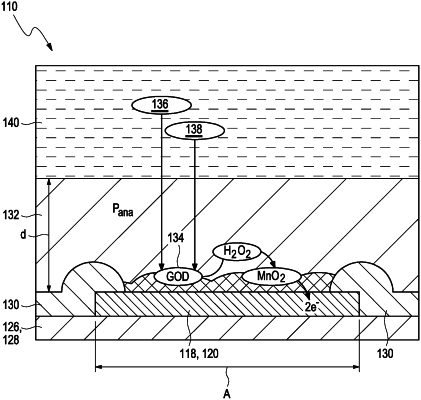| CPC A61B 5/14865 (2013.01) [A61B 5/14532 (2013.01); A61B 5/1495 (2013.01); A61B 2560/0228 (2013.01)] | 13 Claims |

|
1. A method for detecting in-vivo properties of a biosensor adapted for determining a value of an analyte in a body fluid sample, the biosensor having a working electrode covered by a membrane and an enzyme for providing a reaction with the analyte, the method comprising:
a) providing a sensitivity-to-admittance relation of the biosensor;
b) measuring a raw current in the biosensor;
c) measuring an in-vivo current response indicative of the in-vivo admittance of the biosensor, wherein the in-vivo current response is measured at first and second operating points and a time constant τ is determined by the electrical capacitance C of the working electrode and the electrical resistance RM of the membrane by τ=RM·C, wherein the first operating point is selected below τ and the second operating point is selected above τ;
d) determining an analyte value in a sample of a body fluid by using the raw current and compensating an in-vivo sensitivity drift in the biosensor, wherein the in-vivo sensitivity drift is compensated by using the measured value for the raw current and a corrected value for the sensitivity, whereby the sensitivity is determined by using the sensitivity-to-admittance relation from step a); and
e) monitoring a failsafe operation of the biosensor by using the in-vivo current response measured at the first and second operating points.
|